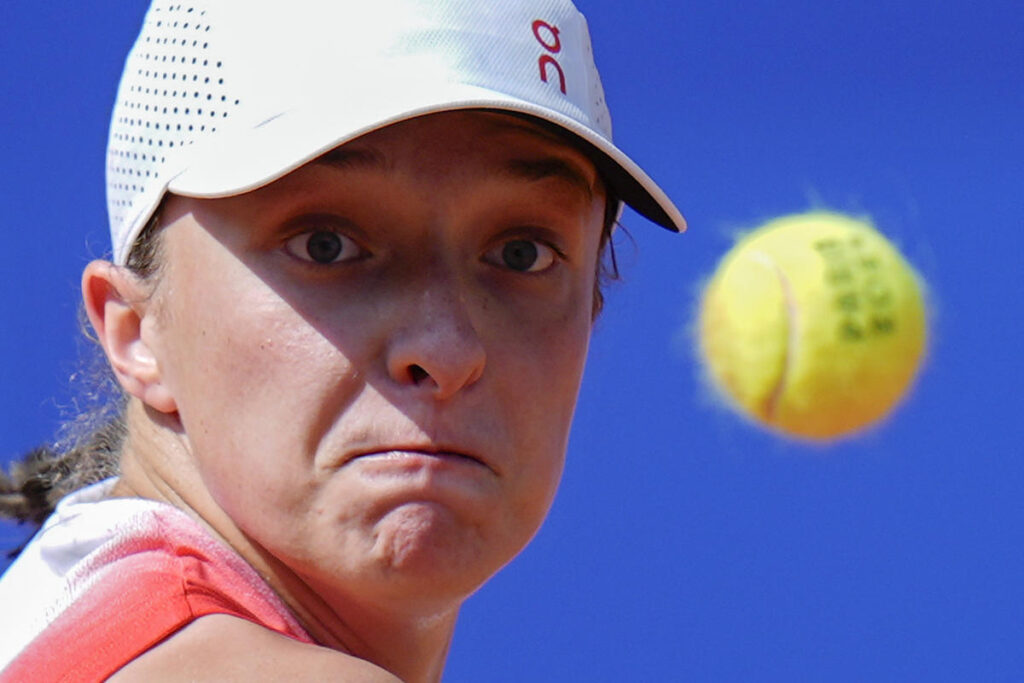Iga Swiatek is the second high-profile tennis player to test positive for a banned substance this year, joining Jannik sinner. While Sinner, currently ranked No. 1, has been completely cleared, Swiatek, who went from No. 1 to No. 2 last month, accepted a one-month suspension this was announced on Thursday.
The International Tennis Integrity Agency said it determined that Swiatek’s contaminated urine sample was due to contaminated medication she had taken and therefore bore a low level of responsibility.
“These are not cases of intentional doping. These are cases — in Sinner’s case… no fault or negligence. In (Swiatek’s) case, very low end, no significant fault or negligence,” ITIA CEO Karen Moorhouse said in a video call with reporters. “So I don’t think it’s a cause for concern for tennis fans and others.”
Here’s a look at the details of both cases:
Who is Iga Swiatek?
Swiatek is a 23-year-old Pole with five Grand Slam titles who has been the best player in women’s tennis over the past two and a half seasons, particularly on clay. She has won four of the last five Roland-Garros titles, including the last three in a rowplus one US Open Championshipand has been ranked No. 1 almost every week since April 2022. Swiatek also collected a bronze medal at the Paris Olympics in early August.
When did Swiatek fail a drug test? What did she test positive for?
Swiatek’s urine revealed low amounts of trimetazidine, a banned heart drug commonly known as TMZ, during an out-of-competition test conducted on August 12, 10 days after his final match at the Summer Games and shortly before the start of the Cincinnati Open. . She was told she would be temporarily suspended on September 12, eight days. after losing to Jessica Pegula in the quarterfinals of the US Open. TMZ was found to have contaminated a sleeping pill, melatonin, that Swiatek’s psychologist bought for him at a pharmacy in Poland, where it is sold as medicine. According to the ITIA report, Swiatek listed 14 medications or supplements she used, but not melatonin.
What is trimetazidine, or TMZ?
Trimetazidine is a metabolic agent that can help prevent angina attacks if used as an “adjunctive treatment,” according to the European Medicines Agency. It can increase blood circulation efficiency and improve endurance, both essential to high-end sports performance. It is on the World Anti-Doping Agency’s banned list in the category of “hormonal and metabolic modulators”. The substance has been implicated in previous Olympic athlete cases involving a Russian figure skater. Kamila Valieva And 23 Chinese swimmers.
When was Swiatek suspended? Is she “banned” during the offseason?
Swiatek received a provisional ban that began in September, after the US Open, but was lifted because she quickly offered a credible explanation for the contamination – supported by testing, the ITIA said. She missed three tournaments during the Asian swing after the US Open, although at the time she did not give the real reason for her exclusion. Ultimately, the ITIA and Swiatek agreed that she would serve a one-month suspension; because she was credited for the time she had already missed, she had eight “one-month” penalty days remaining, so she is “serving” them now, even though the season is over. Swiatek was able to participate in the WTA Finals and the Billie Jean King Cup. “The worst part was the uncertainty,” she said. “I didn’t know what was going to happen in my career, how things would end or if I would be allowed to play tennis.”
What is happening in the case of Jannik Sinner?
Sinner tested positive for banned anabolic steroid twice in March, but nothing was revealed until August, just before the US Open, which he won for his second Grand Slam title in 2024. As with Swiatek, the cases remained quiet until to be resolved because both players offered what the ITIA found to be plausible explanations. He blamed this on a cream his trainer used before massaging Sinner and was therefore completely cleared – although WADA appealed this decision – while Swiatek was found to be “at the lower end of the range without significant fault or negligence”, and was therefore lightly punished. When asked if there were specific guidelines that determine the length of bans in such cases, Moorhouse replied: “No, there are not. This isn’t where you put these things in the machine and it spits out a number at you at the end. It’s about looking at everything globally, taking into account all the circumstances and facts of the case to arrive at the right outcome.”
___
Howard Fendrich has been the AP’s tennis editor since 2002. Find his stories here: https://apnews.com/author/howard-fendrich. More AP tennis: https://apnews.com/hub/tennis

